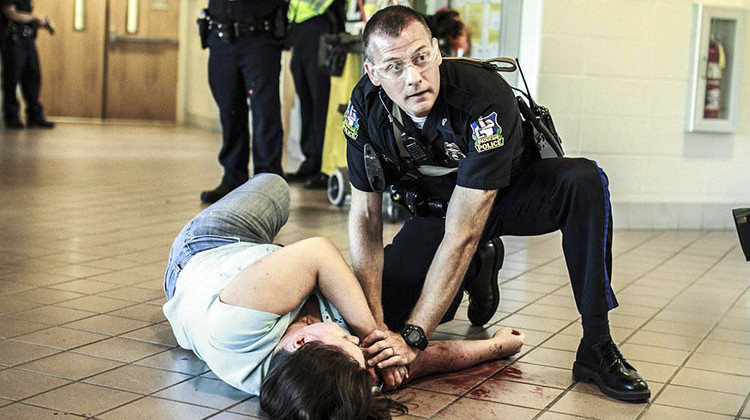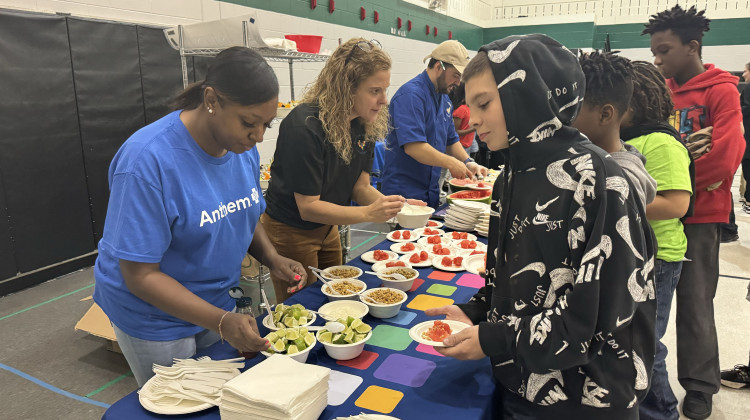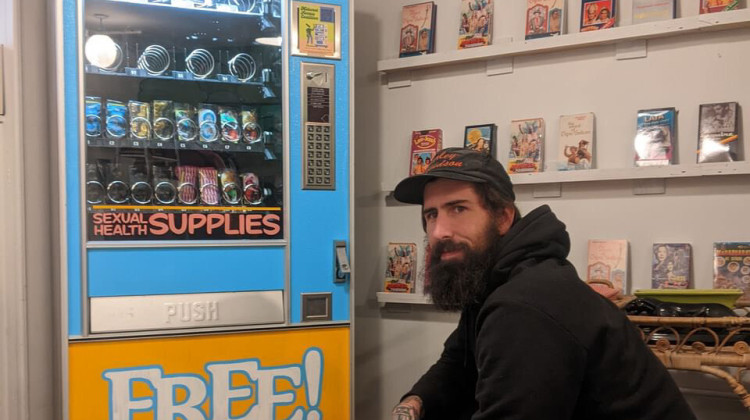
A change in Illinois law means K-12 students must participate in an active shooter drill within the first 90 days of the school year. In this photo, a Paducah Police officer aids a "victim" during an active-shooter mock exercise at West Kentucky Community and Technical College.
“Aid to Injury” by MAMC Photography/CC-BY-NC-SA-2.0Lee V. Gaines
Dianne Gordon knew something was wrong as soon as her daughter stepped off the school bus one April afternoon. Seven-year-old Rory was inconsolable.
"It was heart-breaking," says Gordon, who lives in Champaign, Ill. "She was screaming and yelling. She loves school, and she kept yelling, ‘I don’t want to go back. I don’t want to go back.'”
Gordon says Rory told her she was upset by a “bad guy” drill. Rory, who will be in second grade this fall, is an anxious child, Gordon says. She’s on the autism spectrum and she’s been diagnosed with attention deficit hyperactivity disorder.
School officials confirm that students at Rory’s school participated in a “hard lockdown drill.” An email sent to Gordon from the principal states that the students were told to remain silent, keep their bodies quiet and calm, and listen to their teachers.
A growing number of states are requiring schools to conduct these drills. In the last two years, eight states — including Illinois — either passed or updated laws that mandate drills, according to the National Conference of State Legislatures.
A 2013 Illinois law required active shooter drills, but allowed each district to decide whether to involve students. Last year, however, lawmakers passed a bill requiring all school staff and students to participate in an active shooter drill within the first 90 days of the school year.
The change in the law worries Gordon. For weeks after the lockdown drill, Rory was on high alert anytime she saw a person she didn’t recognize.
“If she saw strange people in the store, she would get upset,” Gordon says. “If she saw policemen on the street who have, you know, guns, of course, in their belts, she would get really upset and say, ‘Mommy, there's a bad guy, there's a bad guy.’
"I don't want her ever to think that the police are bad guys for her. They are supposed to be the safety guys."
Rory is switching schools this year, and Gordon says she doesn’t handle big changes well.
"And then within the first couple of months, she’s going to be doing these scary drills again, which I’m afraid will make her uncomfortable in this brand new environment,” Gordon says.
Over the last five years, there have been roughly 52 kindergarten through 12th grade school shootings per year, according to government data. While every instance is tragic, Gordon believes the odds of a shooting happening at her daughter’s school district are low.
She says she understands why teachers and school staff should undergo active shooter training. But given the potential psychological harm on her daughter, Gordon doesn’t think Rory — or any child — should have to participate.
Melissa Brymer, who directs the terrorism and disaster program at the National Child Traumatic Stress Network, disagrees. The network, which includes healthcare providers, families and researchers, was created by Congress in 2000. It has published guidelines for schools implementing active shooter drills.
Brymer was lead advisor to the Newtown Public School District in Connecticut as it created a trauma recovery program following the 2012 Sandy Hook Elementary School shooting. Since then, she says, more schools have implemented active shooter training.
Brymer says the NCTSN guidelines are designed to address concerns from parents and educators about the impact on student and staff mental health.
The guidelines present steps for schools to take before, during and after active shooter drills. NCTSN suggests using developmentally appropriate language to describe the drill to students beforehand. The organization also recommends that educators are trained on self-care and coping strategies, and that local media are informed so that no one mistakes a drill for a real shooting.
The guidelines also recommend holding informational meetings with parents to allow plenty of time for discussion. Schools are also encouraged to ask parents to inform staff if their child has a trauma history or a special need that may require extra support.
Brymer says unannounced or surprise drills are not recommended, because they can create anxiety and alarm for students, staff and community members.
The goal, she says, is for these drills to be teaching moments.
“We don’t learn when we’re petrified,” Brymer says. “I think we have to remember what’s the goal of these drills, and the goals are to have students and educators have the basic tools and know what to do when there’s an intruder. We need to make sure we’re creating an environment, keeping that learning potential.”
But Brymer says it's important for students to be involved in these drills. “Because we can't predict when emergencies are going to happen, it is important to make sure that students know the basic steps of what to do in case there are these times when an adult isn't present."
Brymer says anecdotal evidence shows the information learned in active shooter drills saves lives.
As for solid research studies on the issue, Steven Schlozman says there aren’t any. He's a child psychiatrist at Massachusetts General Hospital in Boston, a Harvard professor and the co-founder of the Clay Center for Young Healthy Minds, an online resource for information about child and adolescent mental health.
“It’s a very hard thing to investigate,” Schlozman says. “The data, if it does exist, can’t be that good.”
Schlozman says researchers have examined the impact of active shooter drills on children. Most of what’s been collected is anecdotal evidence indicating that a majority of children take active shooter drills in stride.
He adds, “But even in those studies, there are anecdotal descriptions … of kids who are already vulnerable to anxiety disorders, to developmental disorders, or who are cognitively delayed. And despite people being super careful to make this a more palatable exercise for them, they still get pretty, at best, unnerved, and at worst, pretty traumatized by it."
Schlozman is skeptical that involving students in these drills will ultimately improve their safety, because there’s no data to support that argument. He also worries about children like Rory.
“I don't know that we do ourselves any favors with these drills,” Schlozman says. “But I do think that train has left the station.”
He can’t imagine state lawmakers rolling back active shooter drill requirements like the one recently passed in Illinois.
For Rory and her mother, there’s an important caveat in Illinois' new law: School staff can exempt some students from the drills. Gordon hopes that will be the case for her daughter.
Gordon often thinks back on her experience participating in an active shooter drill at her workplace.
“It’s a scary thing for us. So why wouldn’t it be scary for kids,” Gordon says. “Do you really want your kids to go through that kind of fear and terror? I would think the answer would be no.”
This story was produced by Side Effects Public Media, a news collaborative covering public health.
 DONATE
DONATE






 View More Programs
View More Programs


 Support WFYI. We can't do it without you.
Support WFYI. We can't do it without you.